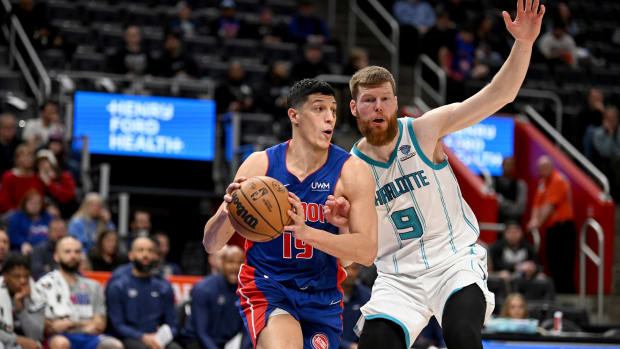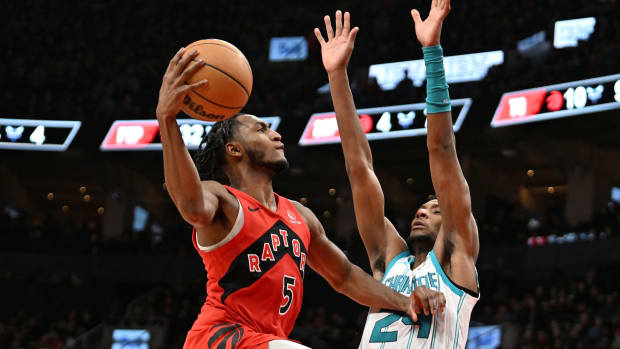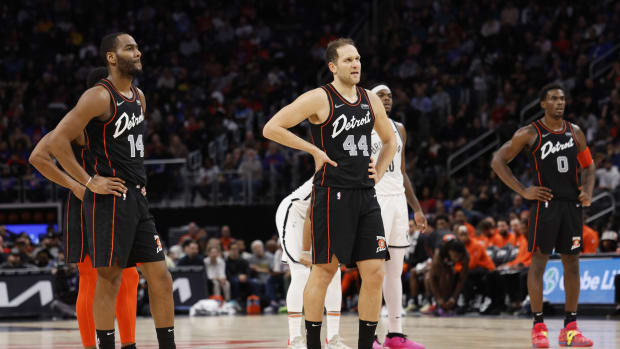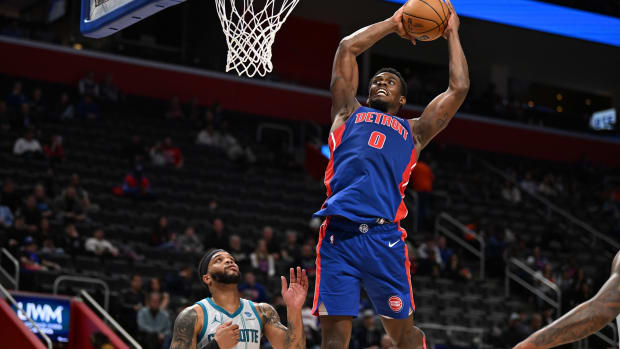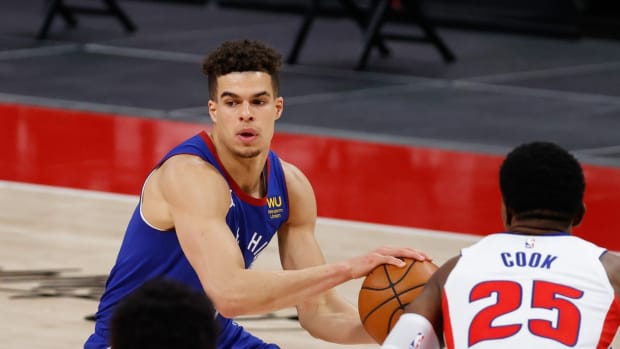Examining The Quick Turnaround Cade Cunningham Has Made To His Sophomore Season
All off-season the conversations surrounding the 2022-2023 Detroit Pistons centered on their so-called “franchise player,” Cade Cunningham. The former Oklahoma State alum had many who doubted his growth, claiming he’s inefficient, turns the ball over too much, and is frankly too slow. Through the preseason and first four games of the regular season, it seemed he might have been proving some of those claims right.
A PASSIVE START
As had been mentioned over and over by analysts and rival fanbases, Cunningham had a challenging first few games. The preseason caused genuine concern as it looked like the former No. 1 pick had lost some feel for the speed of the NBA. He shot a miserable 30.6% from the field and 21.7% from three. It wasn’t the signs of the breakout season many had predicted. Then, after a blowout loss to the Washington Wizards, fans were quick to harp on Cade’s inefficiencies. He was averaging 18.5 points off of a below-average 38.6% shooting from the field and a mediocre 31.8% from behind the arc.
The biggest problem seemed to be that the player who had been labeled to be the Pistons' “franchise player” was trying to make all his teammates happy before getting his own. Having your best player being too unselfish is a great problem to have if you’re Dwane Casey, however, it was hurting the team as they didn’t have a go-to player early on.
With the ball in his hands, it was clear Cade looked to be a pass-first guard. He took fewer shots per game in the preseason and first four games of this season than he did in his rookie year. It was an odd trend for a player the whole coaching staff looked to begin to take games into his own hands.
On the perimeter, he consistently looked to get his new teammates Jaden Ivey and Bojan Bogdanovic going. When he’d drive to the hoop he’d frequently dish out passes off of pick and rolls rather than being confident in his mid-range. Cunningham even admitted a certain sense of passiveness from the preseason after a practice one day when answering questions with Omari Sankofa II of the Detroit Free Press.
Perhaps even some of the reasoning for the passive start is that it was - and still is - extremely early on in the backcourt combination of Cunningham and Jaden Ivey. It seemed that the Pistons wanted to experiment with the fit between the two relatively ball-dominant players. Casey had Ivey bringing the ball up and starting the half-court sets almost as often as Cade did. The difficulty arose when Cunningham would play off-ball and would be stuck in the corners watching what many scouts critiqued Jaden Ivey on, which is putting his head down trying to get a bucket of his own.
A FLIP OF THE SWITCH IN NO. 2
After it was announced on October 26th that Jaden Ivey would be out from a matchup with the Atlanta Hawks, it seemed that something changed within Cade Cunningham. He went from shooting around 17 shots per game to firing off 25 against Atlanta and going for 26 points - 20 of which came in the first half. Despite the close loss, fans felt like they got the No. 2 they remembered from after the all-star break last year.
The aggressive trend continued for the three games that followed, as Cunningham averaged a ridiculous stat line of 27.8/8.3/7.8. Not only was his production increasing, against playoff teams I might add, but also his shooting efficiency had increased. Cade shot on average five more shots per game than he did before and surprisingly went from the 38.6 FG% mentioned earlier to a stunning 49.4% from the field over the four-game stretch.
To shoot at a higher percentage for a higher volume is a major surprise as players often experience lower efficiencies that show unneeded shots taken. However, in the case of Cunningham, he didn’t shoot more just to shoot more. He picked out his spots in the mid-range, attacked the drop coverages off of pick and rolls, and showed his bulkier frame getting to the rim more often. Overall, it seemed like the 6-6 PG had regained his confidence in his own ability to score, something the Pistons desperately need.
As a consequence of the increase in shots, the 21-year-old made fewer passes per game with a usage rate that jumped from 26.6% to 33.9% over the separate spans per NBA.com advanced stats. This is the type of selfishness the Pistons needed to see from their star. We see it all the time in the NBA, where there is a tier of elite players that eat into the number of touches their teammates receive. It’s a necessary evil to win games in a league that’s won by superstars. Cade Cunningham needs to continue to stay aggressive. One could argue after seeing what he has, Dwane Casey should encourage his youngster to keep that aggressiveness switch flipped on until the team needs him to reel it back in.
It’s important to realize the change we’ve examined is over a tiny sample size - literally four games. However, similar arguments were brought up last year when the Pistons started winning games as Cunningham gained full control of the team after the all-star break. Regardless, the Pistons have to be happy with their former top pick knowing that they’ve now seen two sides of him. He’s shown both a willingness to take the back seat to the increased production of his teammates and the ability to put his team on his back getting buckets at will.


